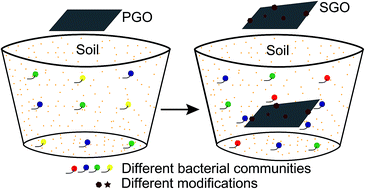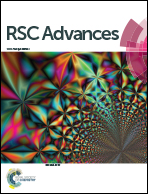Graphene oxide regulates the bacterial community and exhibits property changes in soil†
Abstract
The extensive use of pristine graphene oxide (PGO) increases its environmental release. The interactions of PGO with soils, one of the ultimate repositories for discharged nanomaterial, remain unclear. In the present study, a pyrosequencing analysis based on the bacterial 16S rRNA gene showed that the bacterial community in a PGO-soil sample (PGOS) became richer and more diverse compared with a control soil sample (CS). PGO altered the structure of soil bacterial communities, with some nitrogen-fixing and dissimilatory iron reducing bacteria being selectively enriched, especially at the genus level. SGO (soil-modified graphene oxide) exhibited a greater thickness, a higher C/O ratio, a rougher texture, a lower transparency and a smaller size than PGO. Nitrogen-containing groups and the elements including Mg, Al, Si, K, Ca and Fe were detected in SGO. The changes in surface groups were consistent with the formation of organic molecules coating the SGO. SGO, which exhibited fewer negative charges, was more unstable than PGO. In addition, SGO presented higher chemical activity than PGO; for example, SGO exhibited more unpaired electrons and disordered structures. This work highlights the critical interactions of PGO and soil which deserve comprehensive consideration in assessing the risks of nanomaterials.


 Please wait while we load your content...
Please wait while we load your content...